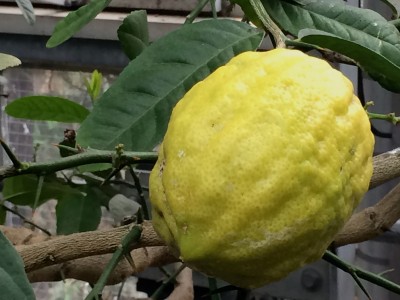
If winter’s dull palate is getting you down, the United States Botanic Garden in Washington, D.C. offers a colorful respite. Located adjacent to the Capitol Grounds, the Garden is one of the oldest botanic gardens in North America. I love visiting the magnificent glass Conservatory on gray winter days where I always find plenty to cheer me up. Here, amidst thousands of tropical flowering plants, specialty orchids, carnivorous plants, cacti and succulents, everything seems to be blooming.
About
The idea for a national botanic garden originated with George Washington, who more than 200 years ago envisioned creating a space in the nation’s capitol that would showcase and promote the importance of plants. In 1820, he realized his dream when Congress established the U.S. Botanic Garden. And a couple decades later, the Garden received a major boost when a collection of live plants was brought to D.C. by the United States Exploring Expedition to the South Seas (otherwise known as the Wilkes Expedition).
Today, the U.S. Botanic Garden maintains approximately 65,000 plants for exhibition, conservation, study and exchange with other institutions. Several historic specimens from the Expedition are still on display.

The Conservatory
The Conservatory Greenhouse was constructed by the Architect of the Capitol in 1933. It contains two courtyard gardens and 10 garden rooms under glass, totaling 28,944 square feet.

Visitors enter into the Conservatory through the Garden Court where they are immediately surrounded by the sound of water and the soft, humid scent of tropical flowers in bloom. A pair of ornamental pools, accented with aquatic blue tiles, are located on either side of the entry. Encircling the pools are groupings of lush plantings in cool green pots.

Facing the pools, large animal topiaries stand guard between rows of honey-colored benches.

Yes, it’s pretty, but the real purpose of the Court is to provide a beautiful setting in which to observe plants that provide materials for humans. These include trees, shrubs and groundcovers that provide fibers, food, beverages, cosmetics, and wood. At the time of my visit, the yellow citron (etrog) trees were just beginning to fruit.

Directly ahead of the Garden Court is the Tropical Garden, a grand vaulted space with a 93-foot dome formed of glass and steel. Designed to resemble a rain forest, the garden includes giant palms and many unusual understory plants. Beautiful drifts of variegated specimens add texture and drama to the display. And there is even a mezzanine level where you can observe the jungle canopy up close.


The Orchid Garden showcases brilliantly-colored and unusual orchids in a naturalistic setting. The U.S. Botanic Garden has over 5,000 specimens that it rotates in and out of display.



The World Desert Garden’s soft palate of grays, silvers and blues was highlighted with soft apricot and dusty pink flowers at the time of my visit. The soothing garden showcases succulents, cacti and other plants adapted to arid environments.


I particularly enjoyed the Medicinal Plant Garden, which showcases plants from around the world that have medicinal properties. Plants in this section include panaceas (or cure-alls), anti-stress adaptogens and tonics to improve overall health. The collection included some recognizable plants, such as feverfew (Tanacetum parthenium) a traditional medicinal herb commonly used to prevent migraines.

And it also included some highly unusual plants like the Noni (Morinda citrifolia), which has been used in traditional Polynesian medicine for over 2,000 years to treat ailments ranging from arthritis to wounds and bowel disorders. Some say it even improves performance in athletes.

The Primeval Garden displays plants that are reminiscent of the Jurassic era, including unusual mosses, ferns and giant cycads.


Plants identified as threatened by the International Union for Conservation of Nature (IUCN) and other international conservation groups form the Rare & Endangered Garden. In addition to being maintained for conservation purposes, the odd-shaped plants in this exhibit serve as educational tools. This unusual plant, called ‘Cabbage on a Stick’ (Brighamia insignis) caught my eye. Native to Hawaii, it is being threatened by a combination of hurricanes, landslides, feeding goats and the near extinction of its native pollinator. Presently, it can be found in the wild only on steep, inaccessible cliffs.

In the Hawaii Garden, I learned that Hawaii represents only two-tenths of 1 percent of the total land mass of the United States, but it has more than 30 percent of the nation’s rare and endangered species.

There is also a Mediterranean Garden, which at the time of my visit was undergoing renovation.

The U.S. Botanic Museum is easily accessible by car and by metro and is free to the public. For more information on the United States Botanic Garden and the National Garden and Bartholdi Park, go to usbg.gov.

